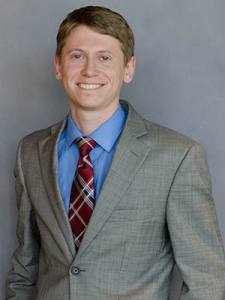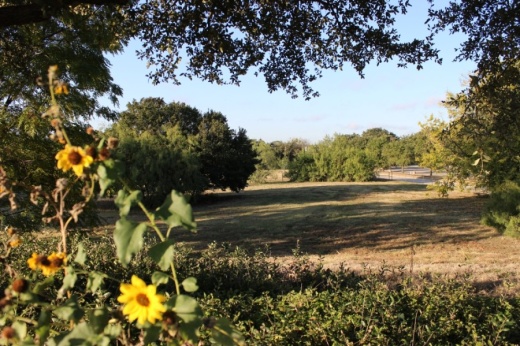Residents of The Triangle in the heart of Lewisville mostly live in apartments. Some work multiple jobs or do not know much English. Unlike most Lewisville residents, they do not have a park within a 10-minute walk to call their own.
“We cannot be in the shadows and expect things like this to happen,” said Nancy Blueitt, a resident of The Triangle who works for an apartment complex in this area and advocates for her neighborhood at city meetings. “We have to speak up, including myself.”
These efforts, alongside those from officials in the city’s parks department, may someday result in a prized asset for the community: a public park within walking distance for most of the area’s 4,500 residents.
On Nov. 2, Lewisville City Council authorized city staff to work to acquire a piece of land near I-35E and Corporate Drive that the city could use for a future park. This step is part of a broader priority to provide access to green space for residents who have few outdoor recreational options.
If developed, the park would serve residents who are currently cut off from nearby recreational resources, such as Lewisville’s Central Park, by major commercial roadways.
The Triangle is bounded on three sides by SH 121 Business to the west, I-35E to the east and Corporate Drive to the south.
“Early on in urban planning, we didn’t do a great job of making sure we set aside public space” for a park in The Triangle, Lewisville Parks and Recreation Director Stacie Anaya said. “There are assets nearby, but they are [only close] as the crow flies.”
It is unsafe or impractical for residents—particularly young children—to cross a road like SH 121 Business on foot to reach Lewisville’s Central Park, Blueitt said. A nearer park could serve as the sort of larger community hub that the area’s largely apartment-based residents currently lack, she said.
However, The Triangle is not the only area of Lewisville where residents lack access to a nearby park.
Years in the making
Last year, Lewisville City Council adopted an ambitious pair of goals for the city’s park system.
By 2025, the city aims to have at least 85% of its residents live within a 10-minute walk of a park. A decade later, the city wants all of its residents to have that same level of access to recreational green space.
Today, only 68% of Lewisville residents can walk to a park from their homes in less than 10 minutes, a rate above the national average but below a number of similar suburbs throughout North Texas, according to national nonprofit The Trust for Public Land. With a new park in The Triangle and a series of joint-use agreements with Lewisville ISD schools, that number would move even higher, according to city staff documents.
The Trust for Public Land is a group that works with cities to identify areas of park need—sometimes called “park deserts”—and to help with solutions. The city of Lewisville shares data with the organization and uses its maps and other resources to help make decisions about future parks.
The 10-minute-walk goal is part of a national campaign that helps compare access in cities across the country.
The organization studies the benefits of parks on a city’s economy, its crime rates and the mental well-being of its residents, said Linda Hwang, director of strategy and innovation for The Trust for Public Land.
“If there’s any silver lining to this pandemic, it’s people really starting to appreciate what pockets of green they do have access to,” Hwang said.
There are still challenges facing Lewisville officials as they try to bring a park to The Triangle, Anaya said. Much of the area is built out with apartments or commercial shopping centers. But the 2-acre property the city is eyeing for a future park there is undeveloped.
While The Triangle is one of the city’s top-priority areas for a new park, Anaya said, parks department staff members are also focusing on other areas of town. If the city were to annex Castle Hills, new park resources could be necessary there, she said. Officials are also considering the addition of park space in Old Town Lewisville as that area is redeveloped.
As in The Triangle—where incomes are roughly $15,000 lower than that of the typical Lewisville household, according to a study conducted in 2019 by the Urban Land Institute—communities with more non-white residents or poorer economic conditions tend to have worse access to parks across the country, Hwang said.
Some of these discrepancies in park access nationwide can be traced back to historical redlining practices, in which businesses and governments discriminated against non-white communities, Hwang said.
“Those neighborhoods have just been consistently overlooked, and it’s sort of a long pattern that was deliberate in the beginning and then probably just ignored for a really long time,” Hwang said.
Lewisville’s efforts to improve park access in recent years are trying to correct for some of these historic gaps, Anaya said.
Bridging the gap
For one Flower Mound resident who works in Lewisville with families in The Triangle, the parks issue came as a surprise.
“I live four miles away,” said Meridith Hall, Next-Gen director at the Valley Creek Next Steps Center, a local charity. “I had no idea this was an issue, and most of the people I know say the exact same thing.”
The issue first came to Hall’s attention as she spoke with residents and local school administrators. Outside of the school grounds, children who the Next Steps Center helps with meals and other services have few spaces outside the home to spend time and play.
Almost every resident Blueitt has spoken to about a possible park has been enthusiastic about the idea, she said, although they are not always comfortable speaking out in a public forum.
Lewisville parks staff has embarked on an unconventional approach to bridge this gap and engage more residents. Staff members are touring the city with a mobile recreation unit called Play Lewisville on Wheels.
For the last year, the free program has brought parks staff, equipment and planned activities to the city’s most underserved places, including apartment complex parking lots and existing, underutilized parks.
The events have varied, from cornhole to one-on-one soccer and other team games and activities.
“My kids loved it,” Blueitt said. “They will look forward [to it]. They ask me all the time, ‘When are they coming back?’ ”
That program had to pause at apartment complexes during the summer as coronavirus cases were on the rise throughout the state, Anaya said.
The program is no long-term substitute for actual, green park space within a walkable distance, Anaya said. But it can offer critical structured play time for children who do not usually have those opportunities.
Ultimately, the city’s efforts to acquire land in The Triangle for a park may provide the access to green space that some residents, such as Blueitt, have been hopeful for.
“It’s a desire; it’s a want, a need, for sure,” Blueitt said.





